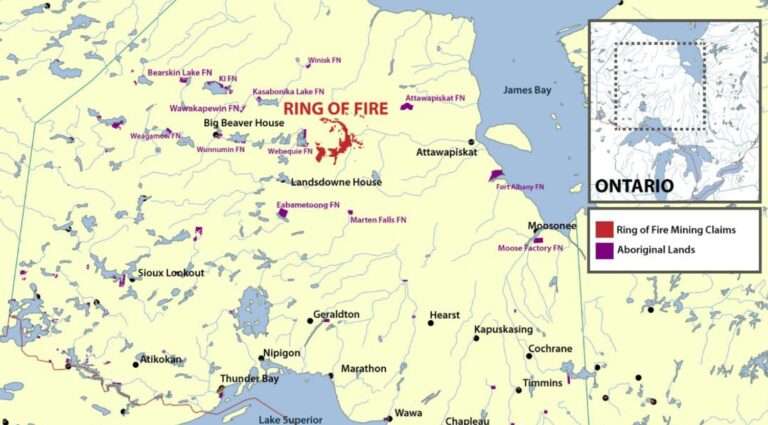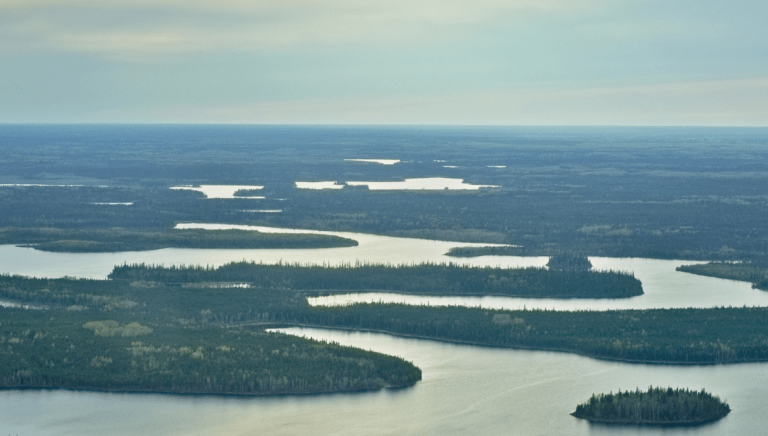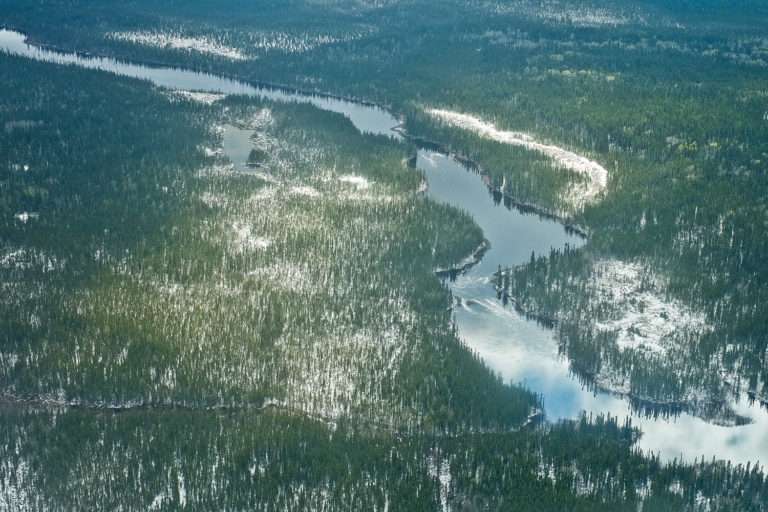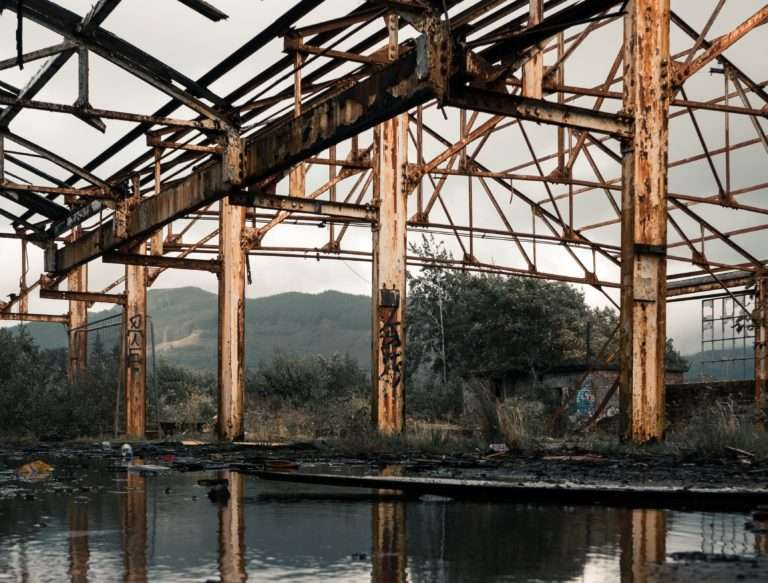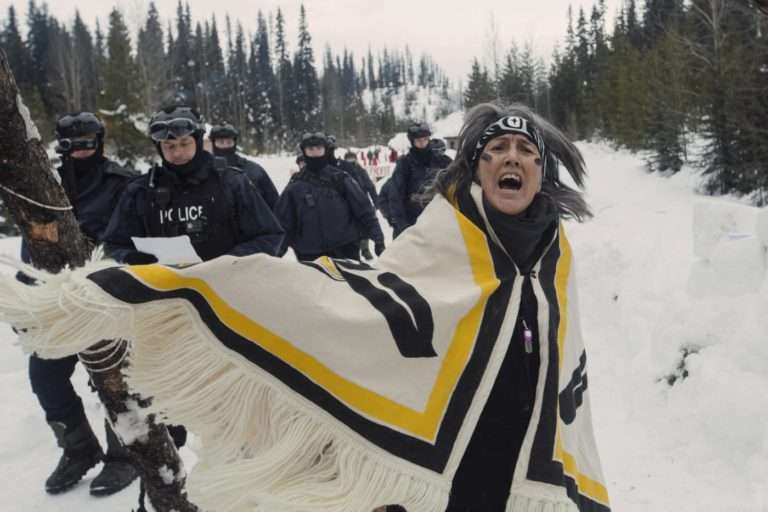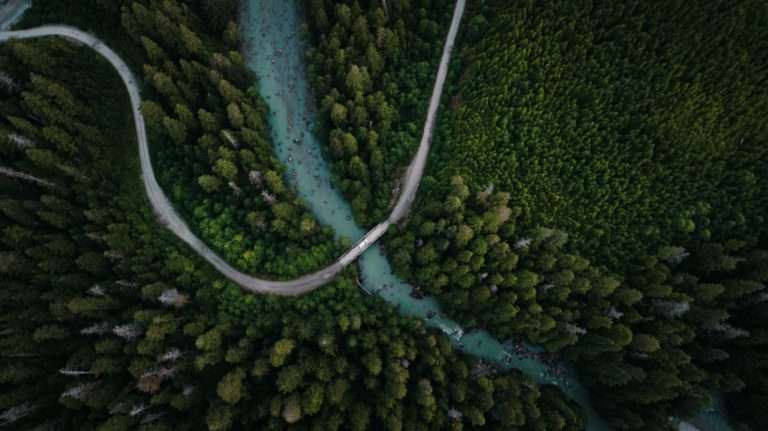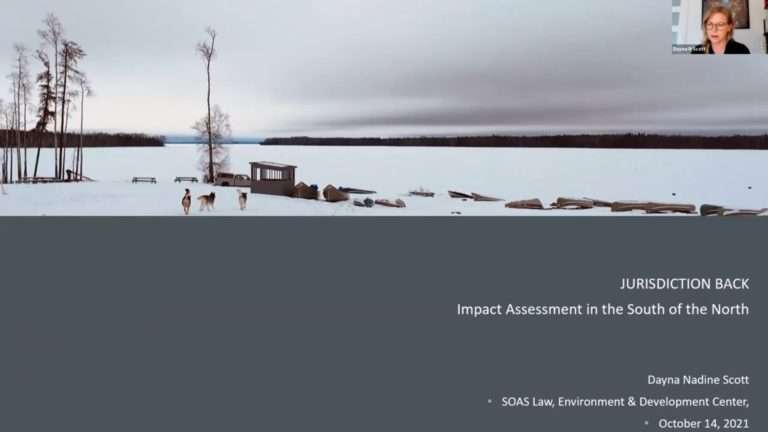Research
Infrastructural (Dis)Entitlement: Tactics of Dispossession on the Critical Minerals Frontier
By: Dayna Nadine Scott | The remote Indigenous communities of Ontario’s boreal north have been hovering on the edge of a new extractive frontier for more than a decade. As often is the case when extractive capital moves onto new ground, the small, remote Anishinaabe and Anishini communities across the peatlands of Treaty No. 9 have been both dreading and inviting transformative changes to their lands, lifeways, and livelihoods.
What is the Ring of Fire?
By: Saima Desai | In the far north of what’s currently known as Ontario, in an area covered by Treaty No. 9, lies the Hudson Bay Lowlands, an area roughly the size of Germany speckled with ponds, lakes, and rivers. Over thousands of years, plants growing in the waterlogged earth would die, never fully decomposing and instead becoming part of a rich, spongy layer of peat. Local First Nations call it the “breathing lands,” referring to the immense amounts of carbon that the peatlands absorb from the air. Rare and threatened plants and animals call the lowlands home: caribou, wolverine, and lake sturgeon.
EV Batteries 101 and the Use of Nickel
By: Isaac Thornley | While the anode is mostly made from graphite, the cathode comprises a range of minerals such as lithium, nickel, manganese, and cobalt. The cathode contains the greatest variety of minerals, is the most valuable part of the battery, and is a major determinant in the performance of the battery—including the energy storage capacity, duration of charge, and battery lifespan.
The Biggest Gap in Ontario’s EV Battery Supply Chain: Indigenous Jurisdiction
By: Isaac Thornley | In 2023, the federal and Ontario governments pledged historic subsidies to automakers—up to $13.2 billion to Volkswagen, $15 billion to Stellantis—to build EV battery plants in Canada. While the subsidies show a commitment to secure a fully domestic supply chain for EV batteries, there remain significant gaps. These include a lack of mineral refining capacity in Canada, a lack of infrastructure in mineral-rich regions (such as the Ring of Fire), and, in particular, a lack of recognition of the jurisdiction of Indigenous peoples and their capacity to provide or withhold consent.
NEW REPORT: Greenwashing the Ring of Fire
By: Saima Desai and Isaac Thornley | The Ontario government is positioning the province as the home of a continuous supply chain for EV batteries. Their hope is that by securing Indigenous consent for mining in the North and massively subsidizing battery factories in the South, the difficult and dirty middle links of the supply chain—like extraction, transportation, and refining—will become inevitable.
What does it mean to let nature take its course?
By: Tiffany Joseph | There are a number of things we could experience or be born into within that the colonial Western mindset that would render us “damaged goods” that are not worth our investment. So, what is the value or importance of healing? And how are we reframing minds, and ways of thinking, that reflect the holistic ways of thinking within our cultures?
Policing Jurisdiction
By: Shiri Pasternak | Jurisdiction offers a rich framework for understanding the terrain of struggle upon which colonial theft is fought in Canada. In my work, I argue that while settler law is asserted as a universal system applied evenly within the boundaries of the nation state, it is in fact a politically and spatially contested claim against Indigenous laws of territorial belonging.
Jurisdiction beyond space, toward time
By: Heidi Kiiwetinepinesiik Stark | While Anishinaabe understandings of creation have largely shaped and shifted my understandings of sovereignty and its relationship to jurisdiction, I find that my understandings of jurisdiction have been largely contoured by examinations of state assertions of sovereignty. Furthermore, the failure of the conceptual work of sovereignty to ground political authority in a meaningful way for many people has necessitated a shift of our attention to jurisdiction.
Infrastructure in the service of future imaginaries
By: Anne Spice | The reclamation and appropriation of the terminology of “infrastructure” challenges the state's weaponization of that language. It is a reclamation and transformation of Canadian legal language that reifies and legitimizes forms of material invasion, among them colonial materializations like pipelines that are being built through unceded Indigenous territories.
Settler colonial infrastructures and infrastructure otherwise
By: Deborah Cowen | What is infrastructure? I think about infrastructure as matter that shapes motion itself. Brian Larkin (2013) suggests that infrastructures “comprise the architecture for circulation.” Infrastructure can underpin and sustain motion and circulation, but it can also inhibit, disrupt or foreclose motion.
Extractivism: The post-extractivist future is a decolonial future
By: Dayna Scott | Scholars have long emphasized how violent the classic extractivist economy is in generating benefits for distant peoples and economies to the detriment of local peoples and ecosystems. This obvious imbalance, or non-reciprocity, is a defining characteristic of the relation. Extractivism is also oriented to the short rather than long term and is organized around external demands and priorities. In other words, the need for the taking comes from somewhere else.
By: Dayna Nadine Scott | In Canada, it has been dramatically demonstrated over and over again that when corporate interests thrust contested projects onto Indigenous homelands they must still contend with Indigenous governing authority.
